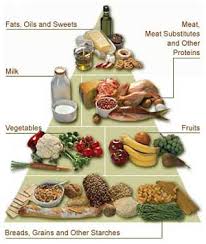Facts On Type 1 Diabetes
Information on type 1 Diabetes isn’t hard to come by nowadays with an entire world of information available on the internet with just a few strokes of the keyboard and clicks of the mouse. Not only is information on type 1 diabetes easier to obtain than ever before, but it also could not have come at a better time as the incidence of both type 1 and type 2 diabetes are certainly on the rise.
Diabetes affects almost 30 million people in the United States alone. Type 2 diabetes accounts for approximately 90% to 95% of the diagnosed cases of diabetes and type 1 diabetes accounts for approximately 5% of the diagnosed cases.
Over the last 20 years or so, the number of diagnosed cases of diabetes in adults has actually doubled as the population in America ages and unfortunately becomes more and more overweight.
So What Causes Type 1 Diabetes?
First of all, diabetes type 1 is not a lifestyle disease. The cause of Type 1 diabetes is unknown and so as a result, it’s not considered preventable.
Some researchers believe that type 1 diabetes is an autoimmune disease and is characterized by the pancreas not producing insulin, producing it in insufficient quantities, or the cells of the body not responding to the insulin that is produced – the pancreas by the body’s own immune system.

Even though glucose is required by every cell in the body as fuel at higher levels it begins to damage organs and tissues and can cause a variety of negative health effects including coma and even death.
Because of this, the key to the proper management of diabetes is glucose control. Glucose levels are controlled either by dietary means or through the use of medications, or both.
It is therefore a real blessing that organizations like the American Diabetic Association exist, where a person can get actual and factual information on type 1 diabetes and also on type 2 diabetes.
If you think you or someone you know may have signs or symptoms of type 1 diabetes the best place to start is at your personal physician.
How are you diagnosed with diabetes type 1?
- The main screening test for type 1 diabetes is a random blood sugar test. This test measures glucose levels at any point during the day and can indicate the result quite quickly – especially important for those who are diagnosed with type 1 diabetes and need urgent supplementary insulin.
2. The AC1 test gives a reading of the patient’s average blood glucose levels over a period of 2 or 3 months.
3. Fasting Blood sugar test. This is when a sample of blood is taken and tested after your child has been fasting overnight.
4. You may have your blood tested for autoantibodies which are substances that indicate your body may be attacking itself. Another indication of diabetes type 1 is the production of ketones which are produced when your body burns fat for energy. Your doctor may recommend this test also if he suspects diabetes type 1.
Your personal physician can do these tests for the disease quickly and easily.
 How long can you live with diabetes type 1?
How long can you live with diabetes type 1?
Research has shown that people with type 1 diabetes have a life expectancy of around 11 years less than average, most people who have type 1 diabetes will eventually die from the complications of the disease such as heart disease.
If you can look after your body, follow a healthy lifestyle that helps prevent heart disease, and keep control of your blood sugar levels, these figures above may certainly change.
Is diabetes type 1 a genetic disease? (Can it be inherited)
Yes, there are strong genetic links with diabetes type 1. The risk is certainly higher with one’s first-degree relatives ie parents, child, or sibling.
 What is the best food for type 1 diabetes?
What is the best food for type 1 diabetes?
If you have diabetes type 1, you should eat a lot of fresh vegetables, fruits, lentils, beans, brown rice, quinoa, oatmeal, and whole wheat. You should also include protein-packed foods such as legumes, eggs, dairy, tofu, seafood, lean meat, and chicken in your healthy meal plan.
Tips for when you eat out, with diabetes type 1
Always ask for sauces to be served on the side – so then you have a choice as to whether you add it, how much to add, or leave it off altogether.
- Opt for broiled, baked grilled, or roasted dishes and avoid fried dishes altogether.
- Go for the ‘broth-based soups’ as opposed to rich creamy soups.
- Try and avoid too much cheese – If you can go without it, even better.
- Go for fruit sorbets or fresh fruits for dessert.
- Have vegetable or tomato toppings on your pasta.

 How long can you live with diabetes type 1?
How long can you live with diabetes type 1?

 1. A good diabetic diet should be a balanced meal plan tailored to your needs, tastes, lifestyles and activity level while aiming to provide all the diabetic needs while keeping the blood sugar as near normal as possible.
1. A good diabetic diet should be a balanced meal plan tailored to your needs, tastes, lifestyles and activity level while aiming to provide all the diabetic needs while keeping the blood sugar as near normal as possible.
 However, a diabetic’s glucose level will always rise right after eating. A child with diabetes may have a blood glucose level of up to 10 mmol/L. Those who have type two diabetes may have a glucose level ranging from 4 to 9 mmol/L while those with type one diabetes should never have a blood glucose level of over 8.5 mmol/L.
However, a diabetic’s glucose level will always rise right after eating. A child with diabetes may have a blood glucose level of up to 10 mmol/L. Those who have type two diabetes may have a glucose level ranging from 4 to 9 mmol/L while those with type one diabetes should never have a blood glucose level of over 8.5 mmol/L.

